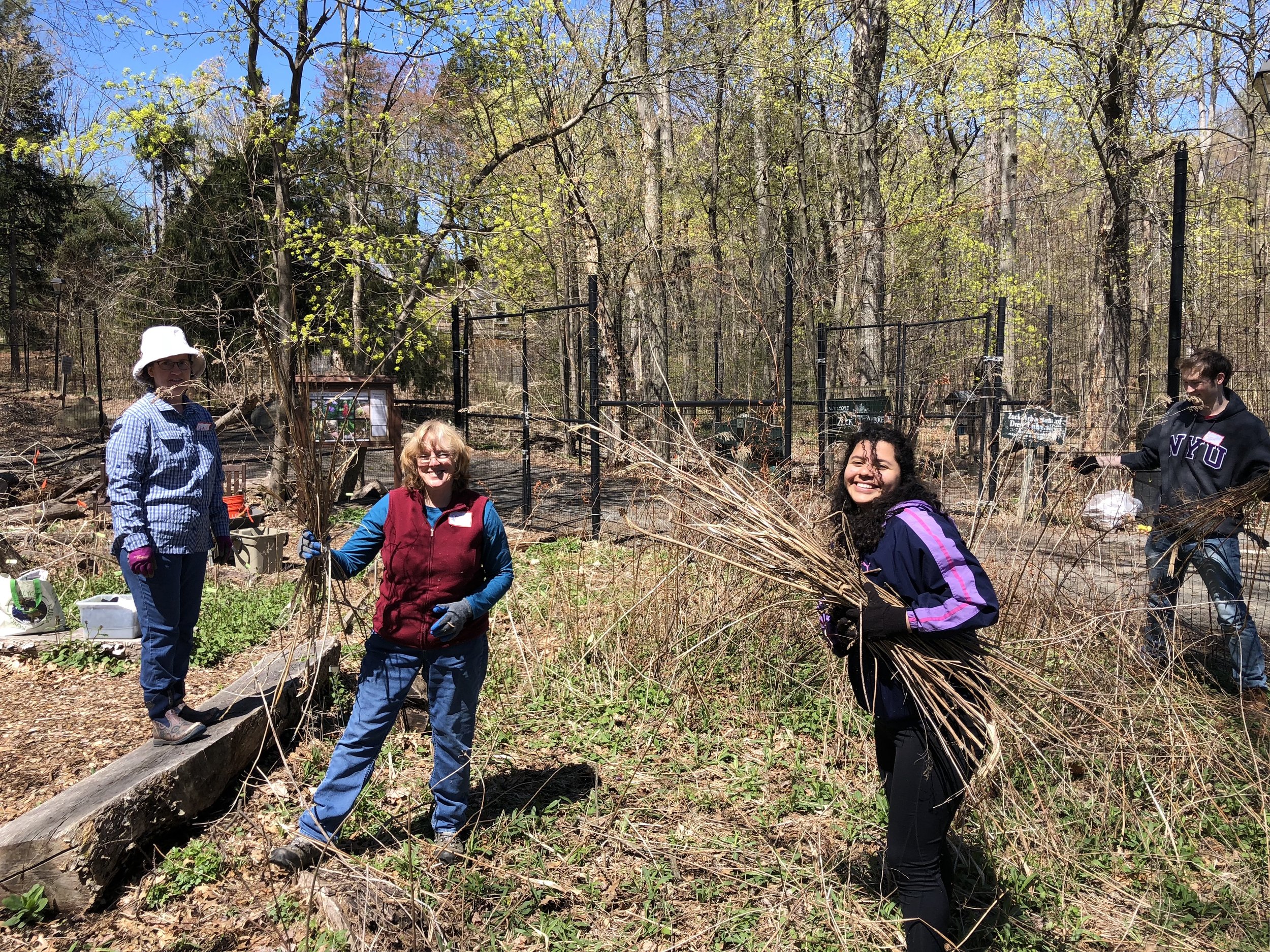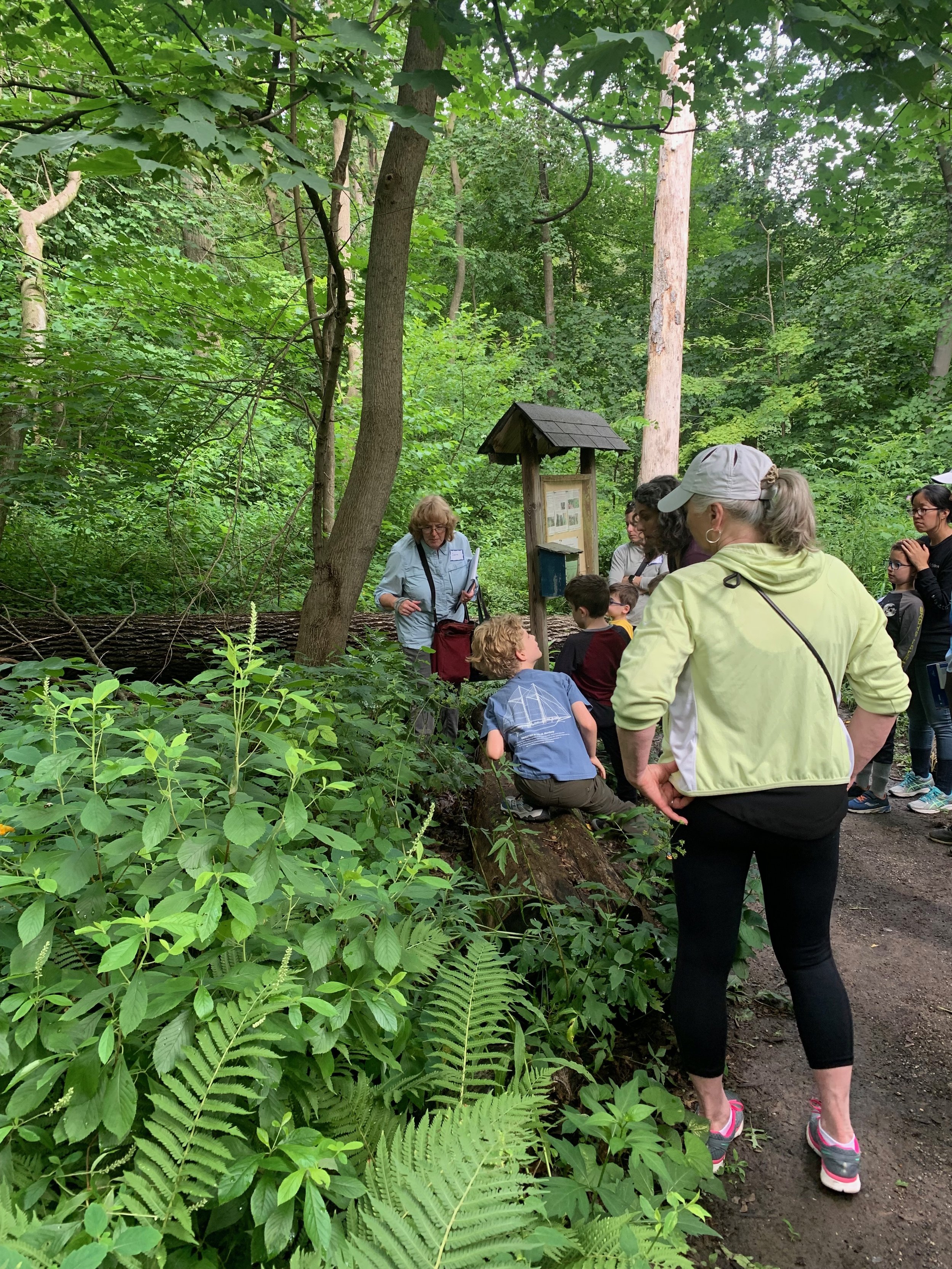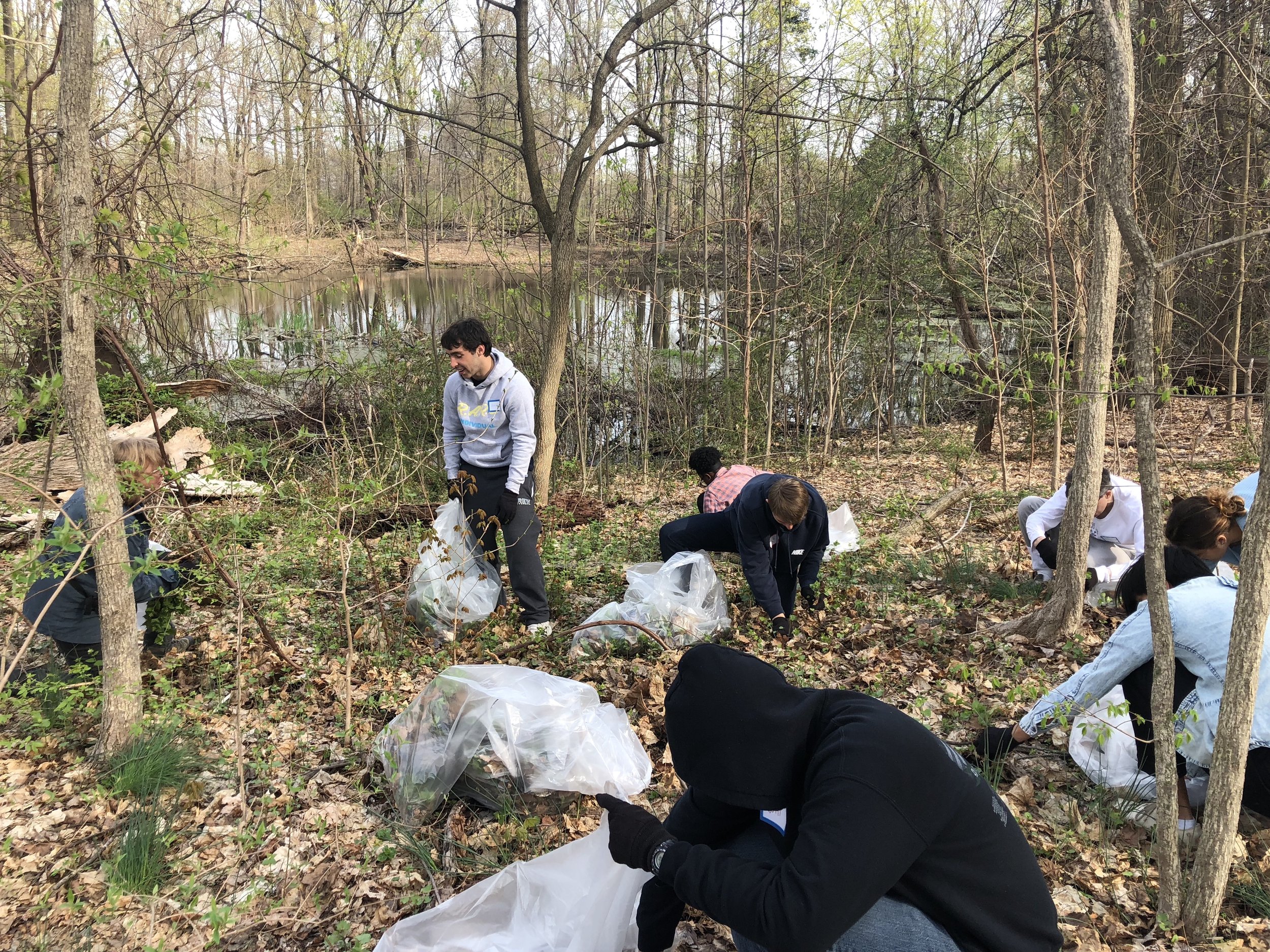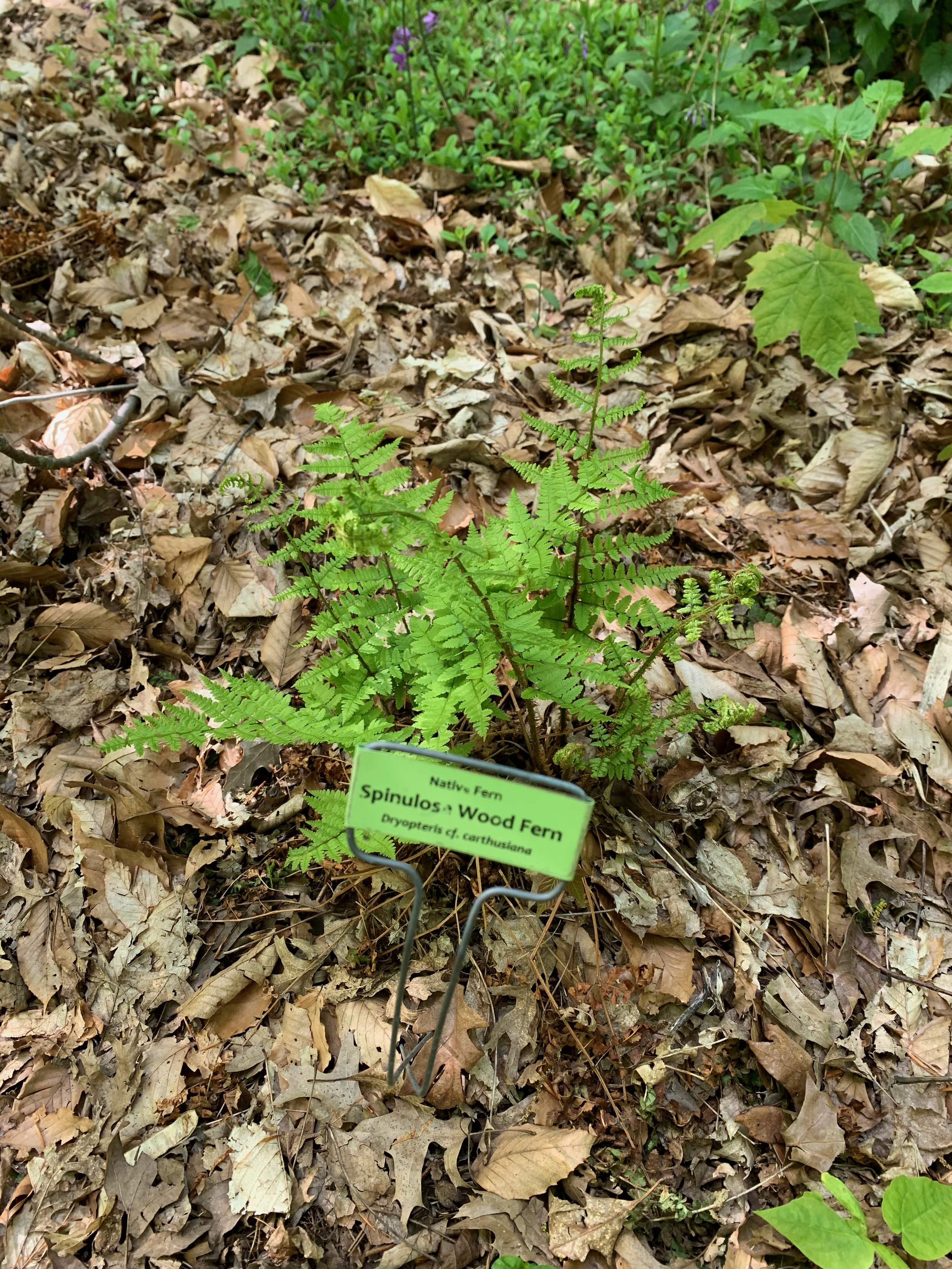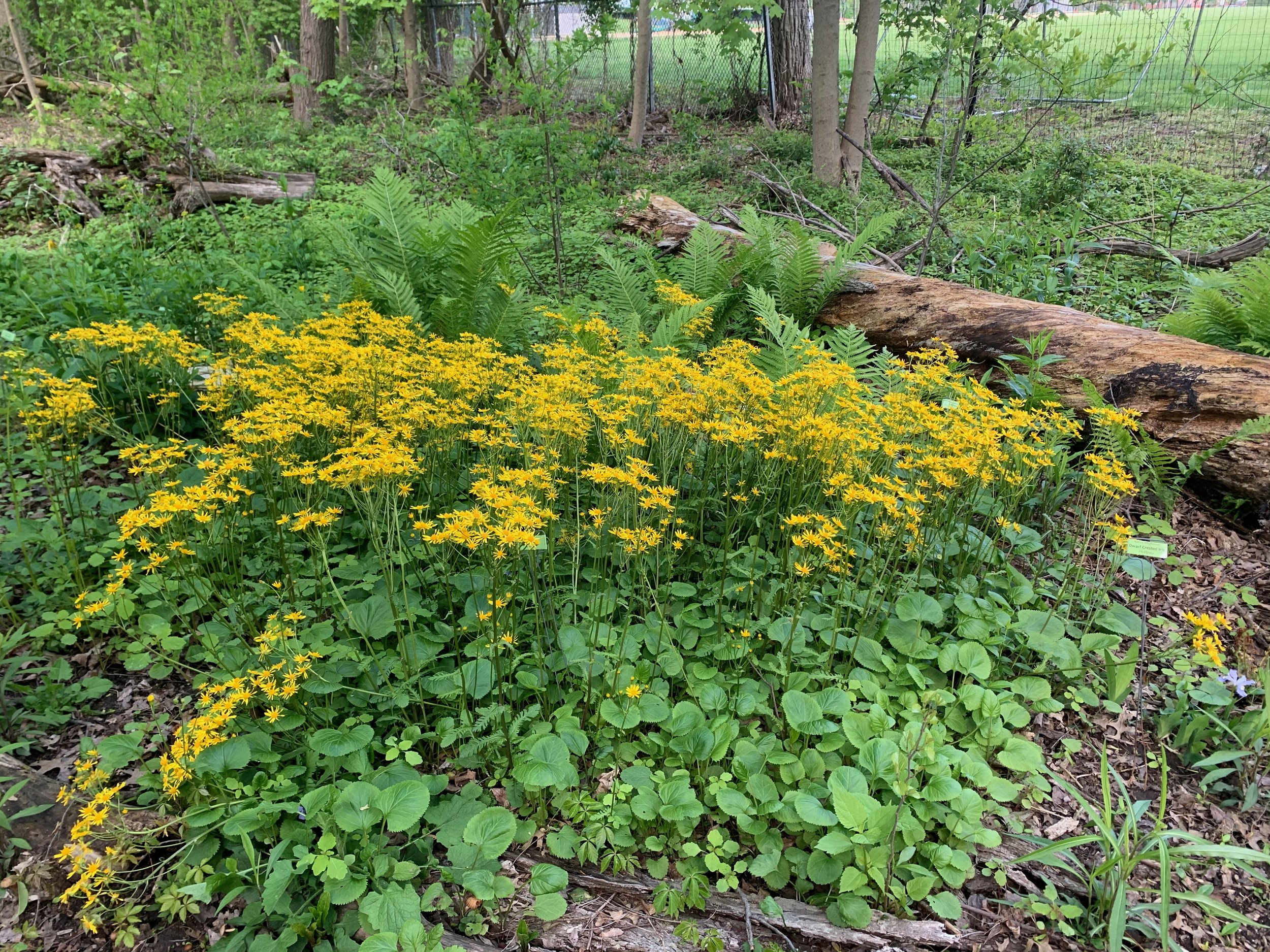Ecological Restoration
Comprising 43% of the Forest Preserve, the Hepburn Woods and the Zuck Arboretum are regionally significant examples of forest restoration. In 2012, a 10-foot deer fence, funded by board member Dr. Christine Hepburn, created a 22-acre exclosure and launched a decade and a half of student and volunteer efforts. Restoration was led by the Forest’s director, Dr. Sara Webb, Drew biology professor emeritus.
Thanks to these tireless efforts, the Forest now features complex layers of habitat: a rare understory of native trees and native plants (many of them labeled) and a flourishing ecosystem frequented by migrating warblers, herons, egrets, turtles, raptors, fox and other wildlife that can be readily observed along walking trails.
The Forest restoration, described below, carries major significance for the county and the state, which is plagued with an “empty forest syndrome” due to deer over population. If permanently preserved, the Drew Forest has the potential to be an important and unique educational center for the region. To find a similar healthy understory, residents would need to travel to preserved areas of the Catskills.
Components of the Drew Forest Restoration Project
Drew students observing a native tree planting demonstration.
Protection from deer with sturdy, nearly-invisible 10’ fencing, installed in 2012.
Control of damaging invasive plants, by the US Fish and Wildlife Service, volunteers and student restoration interns.
Bringing back lost or diminished plant species, pollinators, food webs, and forest structure through restoration plantings (caveat: most but not all surviving):
native trees (2000+ seedlings of native trees, representing 28 species)
native shrubs (750+ shrubs, 17 species)
vines (3 native species)
herbaceous plants (87 species)
another 20 lost native wildflower species returned on their own with protection from deer and invasive species
native tree regeneration also resumed with protection, for five different species
Professor Sara Webb guiding students in the Drew Forest Preserve.
Restoration has focused on the most degraded sections of the Drew Forest Preserve, Hepburn Woods and Zuck Arboretum. They now harbor unusually healthy, diverse ecosystems for teaching and meaningful student research - and where nature can keep a toehold in a sea of suburbia. Entirely fenced and extensively restored, Hepburn Woods and the Zuck Arboretum are of great importance for their natural forest conditions, forming an expanse of forest protected from deer and vines.
Drew University’s Board of Trustees dedicated these areas to ecological restoration in 2010, in partnership with the US Fish and Wildlife Service and with major funding from the Martin-Hepburn Foundation, the Madison Garden Club, and other donors. Note that the unrestored portions of the Drew Forest (outside deer fencing) are also heavily utilized in teaching and research, but is not yet fenced due to funding constraints.
Going forward, at a minimum, deer protection must be maintained or moved to protect whatever restored acreage is not developed. Otherwise, all would be lost: We would see the disappearance of understory layers including future forest trees, loss of recovered and restored species and forest conditions, and resurgence of invasive vegetation.
Restoration Areas:
Hepburn Woods
Dedicated to and named in honor of Dr. Christine Hepburn, who funded the essential, extensive 10’ door fence that surrounds the Hepburn Woods and who continues to support the restoration project. Hepburn Woods has major ongoing research sites that would be detrimental to disrupt. Long-term records are incredibly valuable in ecology and not to be disrupted lightly.
Within the Hepburn Woods:
The entirety of Hepburn Woods is protected from deer and most has been planted with native tree seedlings and shrubs, across years of volunteer, community, and civic scholar events.
An intensive program throughout the woods to remove damaging invasive plants is freeing space and repairing soil for the return of native species.
Vine-infested shrublands once covered a 4-acre zone, where massive wisteria and bittersweet vines literally strangled and pulled down most trees. Now, maturing native trees from thousands of planted seedlings have formed a recovering forest.
A vernal pool (seasonally wet wetland) provides habitat and groundwater recharge.
A designed native plant garden emphasizes species of open meadow habitat.
Another designed native plant project is bringing back the earliest spring woodland wildflowers, a guild of increasingly uncommon plants, along with their pollinators and other wildlife, with special funds from local and state Garden Club organizations.
A large kiosk hosts rotation displays of students’ environmental art, supported by Drew’s “Arts and the Common Good” Mellon grant.
Zuck Arboretum
Heavily used for research and teaching, the Zuck Arboretum is an impressive restoration zone with deer protection, invasive plant management, and plantings to bring back lost vegetation.
Within the Zuck Arboretum:
Two wildlife-rich ponds, important teaching laboratories, accessible habitat for the public to view frogs, turtles, and birds in Zuck Arboretum.
A public self-guiding nature trail with brochures available on site.
Benches for accessibility and a teaching table came from generous Garden Club grants.
Another designed native plant garden (designed by Sandy Goodson) includes a species-rich woodland wildflower area, an open meadow garden, a shrub zone as bird habitat, and other restoration plantings.
Professionally Designed Native Wildflower and Pollinator Gardens
Native plant landscaper Sandy Goodson donated services, native plants, and the training and mentoring of students to design and establish the native wildflower and pollinator gardens in the Drew Forest today. She designed native garden ecosystems in both Zuck and in Hepburn, for pollinators, host plants, and reestablishment of ecosystem structure and function.
Approximately 20 acres of the Drew Forest Preserve are not yet protected with deer fencing due to funding constraints.
These unrestored areas include major glacial ice-block depressions (dells, punchbowls) of importance to aquifer recharge and a high diversity of tree species including some of the oldest trees in the area. Long-term research plots are found in these unrestored areas.


